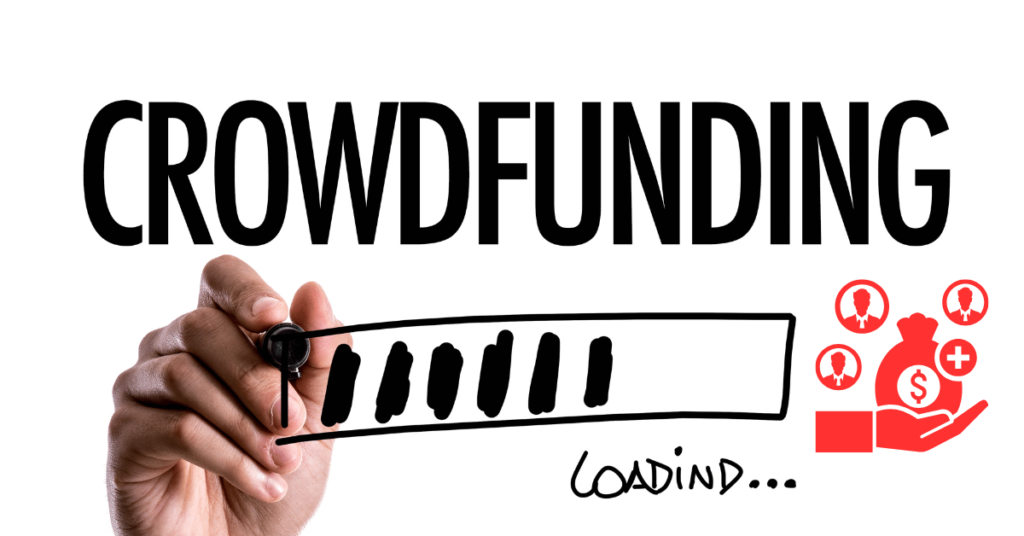Crowdfunding has emerged as an innovative way for individuals and businesses to secure financing by appealing directly to the public. While traditionally used to raise funds for creative projects or startups, crowdfunding platforms now offer a viable alternative to traditional loans. This guide will explain how to secure a loan through crowdfunding, how the process works, and the pros and cons of using this approach for financing.
What is Crowdfunding?
Crowdfunding is a method of raising capital by collecting small amounts of money from a large number of people, typically through an online platform. Unlike traditional loans from banks or credit unions, crowdfunding does not rely on a single lender but instead allows individuals or businesses to seek contributions from supporters, backers, or investors.
There are different types of crowdfunding models:
- Reward-based crowdfunding: Backers contribute money in exchange for rewards or products.
- Equity-based crowdfunding: Investors receive shares or equity in the business.
- Debt-based crowdfunding: Also known as peer-to-peer lending, where backers loan money and expect repayment with interest.
In this guide, we’ll focus on debt-based crowdfunding, which allows individuals or businesses to obtain loans from multiple lenders who pool their funds together.
How Debt-Based Crowdfunding Works
Debt-based crowdfunding platforms act as intermediaries between borrowers and lenders. Here’s how the process typically works:
Step 1: Choose a Crowdfunding Platform
To start, you’ll need to select a crowdfunding platform that offers peer-to-peer lending or debt-based crowdfunding. Some popular options include:
- LendingClub
- Prosper
- Upstart
- Funding Circle (for businesses)
Each platform has its own set of rules, loan terms, and application processes, so it’s important to research which one aligns with your needs.
Step 2: Create a Loan Request
Once you’ve selected a platform, you’ll need to create a loan request. This usually involves providing detailed information about:
- The loan amount: How much money you’re seeking.
- Purpose of the loan: What you intend to use the loan for, such as starting a business, consolidating debt, or funding a personal expense.
- Your financial background: Some platforms will ask for your credit score, income, and employment details.
- Repayment terms: The proposed interest rate and repayment period, which vary based on your creditworthiness and the platform’s guidelines.
Step 3: Pitch Your Loan
Unlike traditional banks, debt-based crowdfunding platforms often allow you to create a narrative or story to explain why you need the loan. Your loan pitch is crucial to attracting backers. Be honest, transparent, and persuasive. Include details about your project or goal, your plan for using the funds, and how you intend to repay the loan.
Step 4: Fundraising Period
After submitting your loan request, the platform will make your proposal available to potential lenders. During the fundraising period, individual investors can choose to contribute to your loan in small amounts. Once the total loan amount is reached, the funds will be disbursed to you.
Step 5: Repayment
Once you receive the funds, you’ll begin repaying the loan according to the agreed terms. Repayments are made on a regular schedule (monthly, quarterly, etc.), with interest, and are distributed to the individual lenders who contributed to your loan.
Pros of Getting a Loan Through Crowdfunding
1. Flexible Loan Terms
Crowdfunding platforms often offer more flexible terms than traditional lenders, especially if you have a unique financial situation. You may find it easier to secure funding even with a lower credit score or unconventional income.
2. Fast and Simple Application Process
Unlike bank loans, which can take weeks or months to process, crowdfunding platforms have a streamlined, online process. Some platforms approve loans within days or even hours, making it a good option if you need funds quickly.
3. Lower Interest Rates
Depending on your creditworthiness, crowdfunding platforms can offer lower interest rates than traditional lenders. Since multiple investors are contributing small amounts, they may be more willing to offer competitive rates.
4. No Collateral Required
Many crowdfunding platforms do not require collateral, making them ideal for individuals or small businesses that do not have assets to pledge.
Cons of Getting a Loan Through Crowdfunding
1. Risk of Not Reaching Your Funding Goal
One of the biggest risks with crowdfunding is that you might not reach your target loan amount. If your campaign doesn’t attract enough backers, you may not receive any funds at all.
2. High Fees
Some crowdfunding platforms charge fees for using their service, which can range from 3% to 5% of the total loan amount. Be sure to check the platform’s fee structure before starting your campaign.
3. Impact on Credit Score
Most debt-based crowdfunding platforms require a credit check, which can temporarily lower your credit score. Additionally, missing repayments can negatively impact your credit.
4. Potentially Higher Interest Rates for Some Borrowers
While crowdfunding can offer competitive rates for borrowers with good credit, those with lower credit scores may face higher interest rates compared to traditional loans.
Best Crowdfunding Platforms for Loans
Here are a few top-rated debt-based crowdfunding platforms to consider:
- LendingClub: One of the largest peer-to-peer lending platforms, offering personal and business loans with competitive rates.
- Prosper: A popular platform for personal loans, Prosper offers loans for debt consolidation, home improvement, and more.
- Upstart: Known for its use of artificial intelligence in lending decisions, Upstart considers factors beyond your credit score, such as education and job history.
- Funding Circle: Focused on small business loans, Funding Circle offers quick approvals and competitive interest rates.
Conclusion
Crowdfunding offers a unique way to secure a loan by leveraging the power of many lenders. While it comes with some risks, including the possibility of not reaching your funding goal, it can be a valuable option for individuals and businesses seeking flexible, fast, and accessible financing. By choosing the right platform and creating a compelling loan request, you can increase your chances of successfully securing a loan through crowdfunding.
If you have any questions feel free to comment down below. We are always here to guide you!
FAQs
What is debt-based crowdfunding?
Debt-based crowdfunding, also known as peer-to-peer lending, is a method where individuals or businesses borrow money from multiple lenders through an online platform. The loan is repaid with interest over time.
How do I apply for a loan through crowdfunding?
To apply for a loan through crowdfunding, you need to choose a platform, create a loan request with details about the amount needed and its purpose, and pitch your loan to potential lenders.
Do I need a good credit score to get a loan through crowdfunding?
Some platforms require a credit check and offer better rates to borrowers with good credit, but others, like Upstart, consider additional factors like education and income, making loans accessible even to those with lower credit scores.
How long does it take to get a loan through crowdfunding?
The time it takes varies by platform. Some crowdfunding platforms offer fast approvals, and you may receive funds within days. However, reaching your funding goal can take longer depending on the number of backers.
Is crowdfunding better than a traditional loan?
Crowdfunding offers more flexible terms and faster approvals than traditional loans, but it may come with higher fees and interest rates for borrowers with poor credit. It’s best for those looking for alternative lending options or who don’t qualify for traditional loans.




